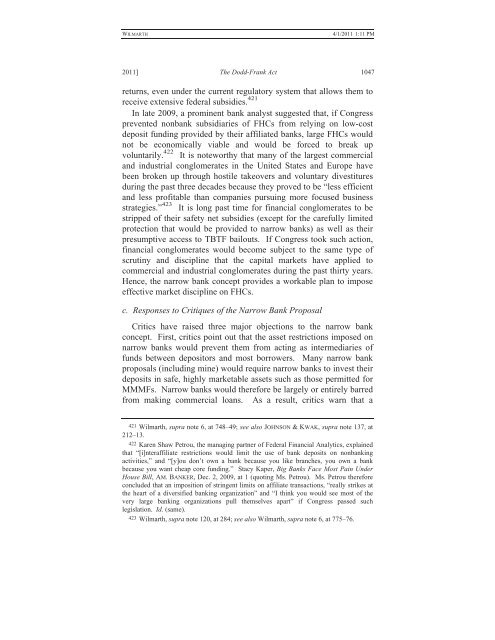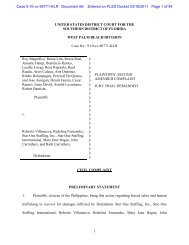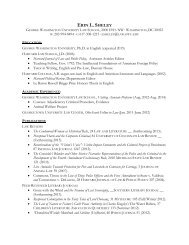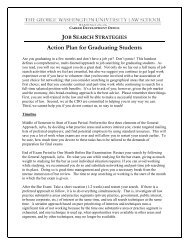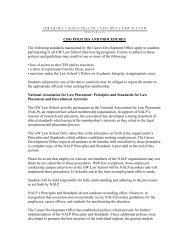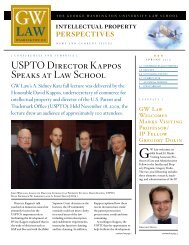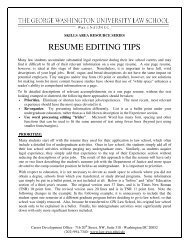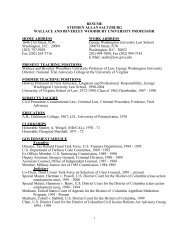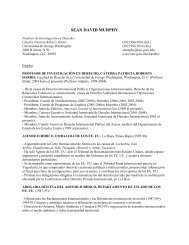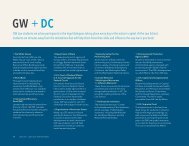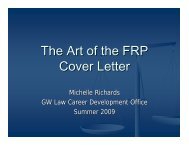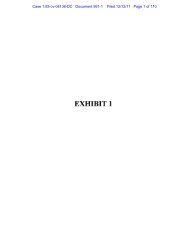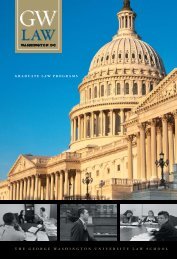CLE Materials for Panel #1 - George Washington University Law ...
CLE Materials for Panel #1 - George Washington University Law ...
CLE Materials for Panel #1 - George Washington University Law ...
You also want an ePaper? Increase the reach of your titles
YUMPU automatically turns print PDFs into web optimized ePapers that Google loves.
WILMARTH<br />
4/1/2011 1:11 PM<br />
2011] The Dodd-Frank Act 1047<br />
returns, even under the current regulatory system that allows them to<br />
receive extensive federal subsidies. 421<br />
In late 2009, a prominent bank analyst suggested that, if Congress<br />
prevented nonbank subsidiaries of FHCs from relying on low-cost<br />
deposit funding provided by their affiliated banks, large FHCs would<br />
not be economically viable and would be <strong>for</strong>ced to break up<br />
voluntarily. 422 It is noteworthy that many of the largest commercial<br />
and industrial conglomerates in the United States and Europe have<br />
been broken up through hostile takeovers and voluntary divestitures<br />
during the past three decades because they proved to be “less efficient<br />
and less profitable than companies pursuing more focused business<br />
strategies.” 423 It is long past time <strong>for</strong> financial conglomerates to be<br />
stripped of their safety net subsidies (except <strong>for</strong> the carefully limited<br />
protection that would be provided to narrow banks) as well as their<br />
presumptive access to TBTF bailouts. If Congress took such action,<br />
financial conglomerates would become subject to the same type of<br />
scrutiny and discipline that the capital markets have applied to<br />
commercial and industrial conglomerates during the past thirty years.<br />
Hence, the narrow bank concept provides a workable plan to impose<br />
effective market discipline on FHCs.<br />
c. Responses to Critiques of the Narrow Bank Proposal<br />
Critics have raised three major objections to the narrow bank<br />
concept. First, critics point out that the asset restrictions imposed on<br />
narrow banks would prevent them from acting as intermediaries of<br />
funds between depositors and most borrowers. Many narrow bank<br />
proposals (including mine) would require narrow banks to invest their<br />
deposits in safe, highly marketable assets such as those permitted <strong>for</strong><br />
MMMFs. Narrow banks would there<strong>for</strong>e be largely or entirely barred<br />
from making commercial loans. As a result, critics warn that a<br />
421 Wilmarth, supra note 6, at 748–49; see also JOHNSON & KWAK, supra note 137, at<br />
212–13.<br />
422 Karen Shaw Petrou, the managing partner of Federal Financial Analytics, explained<br />
that “[i]nteraffiliate restrictions would limit the use of bank deposits on nonbanking<br />
activities,” and “[y]ou don’t own a bank because you like branches, you own a bank<br />
because you want cheap core funding.” Stacy Kaper, Big Banks Face Most Pain Under<br />
House Bill, AM. BANKER, Dec. 2, 2009, at 1 (quoting Ms. Petrou). Ms. Petrou there<strong>for</strong>e<br />
concluded that an imposition of stringent limits on affiliate transactions, “really strikes at<br />
the heart of a diversified banking organization” and “I think you would see most of the<br />
very large banking organizations pull themselves apart” if Congress passed such<br />
legislation. Id. (same).<br />
423 Wilmarth, supra note 120, at 284; see also Wilmarth, supra note 6, at 775–76.


